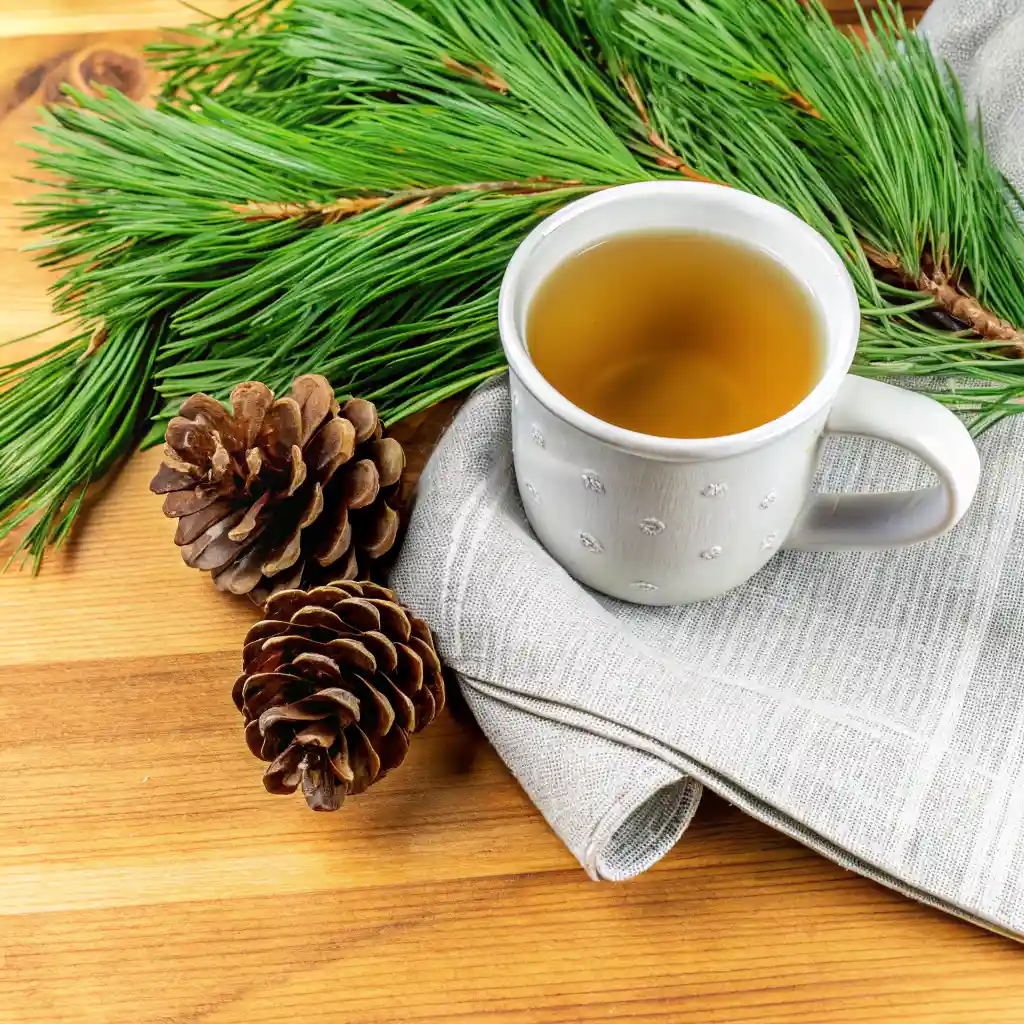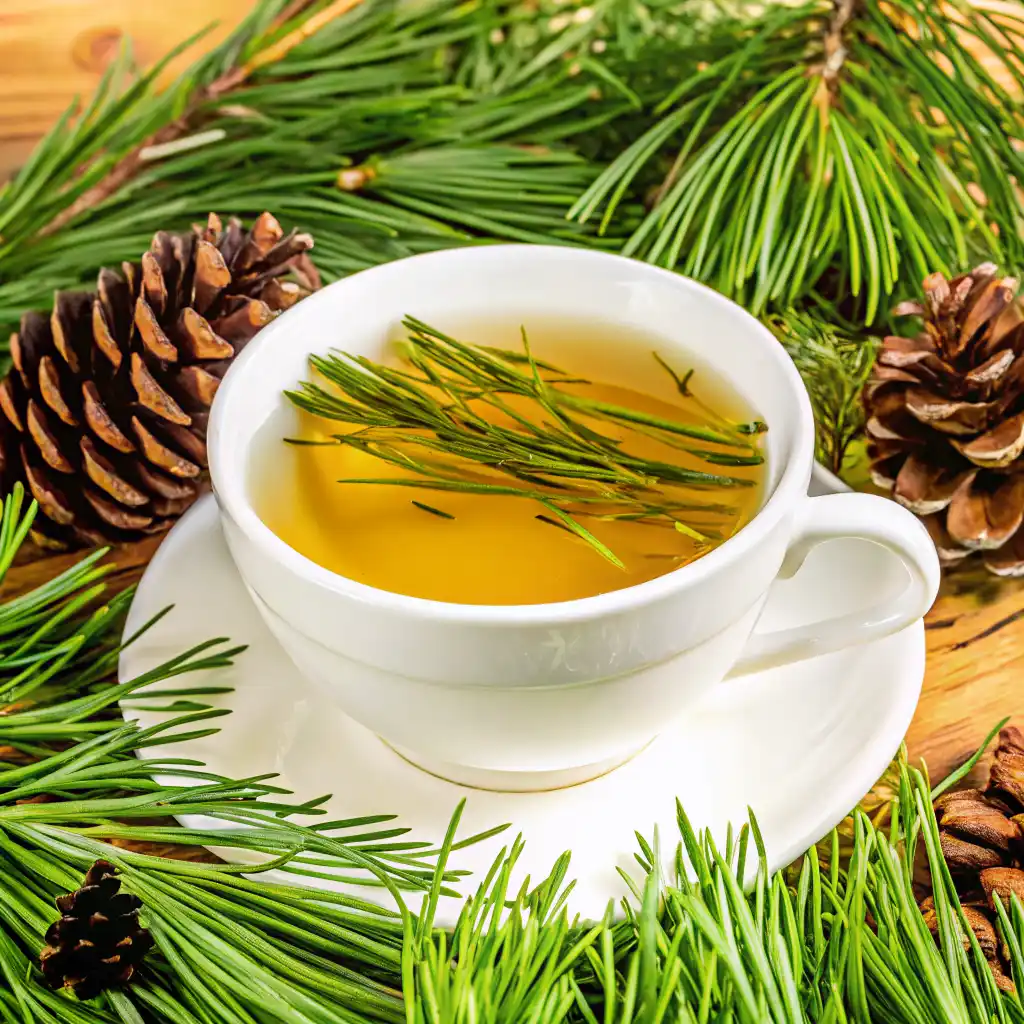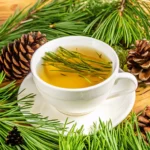Discover this forest-scented herbal tea and why it’s making a comeback in wellness circles.
Pine needle tea wasn’t something we grew up drinking—it found its way into our lives when Emily began exploring natural remedies during one especially long winter. The flu had passed through town like a shadow, and everyone was looking for ways to stay well. One morning, after a walk through the woods behind the farmhouse, Emily came back with a handful of fresh pine needles in her hand and an idea in her heart.
That afternoon, while Lucky snored by the stove and snow drifted down outside, she brewed our first pot of pine needle tea. It filled the kitchen with a woodsy, citrusy scent that somehow felt both grounding and hopeful. We didn’t know it yet, but that moment would turn into one of our favorite winter rituals.
Table of Contents
What to Know About Pine Needle Tea (Health, Uses & Recipe)
Discover this forest-scented herbal tea and why it’s making a comeback in wellness circles.
- Prep Time: 5 minutes
- Cook Time: 15 minutes
- Total Time: 20 minutes
- Yield: 2 servings 1x
- Category: Drink
- Method: Stovetop
- Cuisine: Herbal Remedy
Ingredients
- 2 cups water
- 1–2 tablespoons fresh, chopped pine needles (white pine, eastern white pine, or Douglas fir)
- Optional: honey or lemon to taste
Instructions
- Rinse pine needles thoroughly to remove dirt or debris.
- Roughly chop the pine needles to help release their oils.
- Bring 2 cups of water to a gentle boil.
- Add the chopped pine needles to the water.
- Reduce heat and let simmer or steep for 10–15 minutes, covered.
- Strain the tea into a mug.
- Add honey or lemon if desired, then serve warm.
Notes
Use only safe pine varieties such as white pine or Douglas fir. Avoid toxic types like yew or ponderosa pine. This tea is especially soothing during cold weather and flu season.
Nutrition
- Serving Size: 1 cup
- Calories: 5
- Sugar: 0g
- Sodium: 0mg
- Fat: 0g
- Saturated Fat: 0g
- Unsaturated Fat: 0g
- Trans Fat: 0g
- Carbohydrates: 1g
- Fiber: 0g
- Protein: 0g
- Cholesterol: 0mg
Understanding the Basics: What Is Pine Needle Tea?
Pine needle tea is a simple infusion made by steeping the young, green needles of certain pine trees in hot water. It’s known for its bright, slightly resinous flavor—like citrus with a hint of forest. What surprises most people is how refreshing it tastes, especially when paired with a bit of honey or lemon.
Much like butterfly pea flower tea, it offers more than just a unique flavor—it’s a tradition with deep roots in herbal and indigenous medicine. Native communities have long brewed pine tea not only for hydration but for immune support during cold months.
What Kind of Pine Trees Are Used for Pine Tea?
When Emily first started making pine needle tea, she researched carefully to make sure she chose the right variety. Not all pine needles are safe—some, like yew or ponderosa pine, can be harmful. But white pine, eastern white pine, and Douglas fir are all excellent choices.
Fresh, green needles from these trees are what you’re after. They’re flexible, fragrant, and loaded with nutrients. Emily says the scent reminds her of being barefoot in the woods as a kid, and brewing pine needle tea brings a little of that forest magic into the home.
The Nutritional Goodness Hidden in Pine Needles
You’d be surprised by the amount of goodness packed into a small cup of pine needle tea. It’s particularly high in vitamin C—some varieties offer even more than oranges per cup. That makes it a go-to during cold and flu season. Pine needles also contain vitamin A, antioxidants, and natural compounds believed to support respiratory health.
Compared to other natural drinks like the natural Mounjaro recipe or our color-changing iced butterfly pea flower tea latte, this one feels like it came straight from the forest to your cup.
Immune and Wellness Benefits of Drinking Pine Needle Tea
Many people turn to pine needle tea for its potential to strengthen the immune system and soothe the lungs. Thanks to its high vitamin C content and mild expectorant qualities, it’s often used during the winter to combat colds or coughs. Some studies even suggest it may offer anti-inflammatory and antiviral benefits, although more research is needed.
Emily often adds it to our weekly rotation of herbal drinks alongside our Brazilian-inspired Mounjaro blends for a balanced, gut-friendly, immune-supporting routine. Drinking pine needle tea reminds us that wellness can be simple, local, and deeply rooted in nature.

Brew It Right: How to Make Pine Needle Tea at Home
Making pine needle tea is easy and rewarding. Emily always starts by rinsing the needles thoroughly to remove any dirt or bugs. Then she chops them roughly to help release their oils.
Here’s how we do it at home:
- Bring 2 cups of water to a gentle boil.
- Add a small handful (about 1–2 tablespoons) of chopped, clean pine needles.
- Reduce heat and let it simmer or steep for 10–15 minutes, covered.
- Strain into your favorite mug, sweeten with honey or lemon if desired.
Like our cozy herbal staples, pine needle tea tastes best when made with intention and served slowly.
FAQs
What are the benefits of pine needle tea?
Pine needle tea is valued for its high vitamin C content, which helps support a healthy immune system. It also contains vitamin A and a range of antioxidants that may reduce inflammation and support respiratory wellness. Traditionally, it’s been used to help ease coughs, boost circulation, and provide gentle immune support—especially during the colder months.
Is it safe to boil pine needles for tea?
Yes, boiling pine needles is a safe and effective way to extract their nutrients—especially when you’re using non-toxic varieties like white pine or eastern white pine. Boiling also releases the aromatic oils that give pine needle tea its refreshing, forest-like flavor. Just be sure to avoid species like yew or ponderosa pine, which can be harmful.
Can you make tea out of any pine needles?
No, not all pine needles are suitable for tea. Some species, such as yew, Norfolk Island pine, and ponderosa pine, can be toxic when ingested. It’s essential to positively identify the tree before using its needles. Safe choices for making pine needle tea include white pine, Douglas fir, and eastern white pine. When in doubt, consult a local herbalist or botanical expert.
What do pine needles do for the body?
Pine needles contain antioxidants, vitamin C, and other compounds that may benefit the body by supporting the immune system, reducing oxidative stress, and improving respiratory function. Some people drink pine needle tea to help with mild congestion or to support overall wellness during flu season. When consumed in moderation from safe varieties, it’s a simple, nourishing herbal remedy straight from nature.
Final Scoop
Pine needle tea may not be as widely known as trendy wellness drinks, but it carries a quiet kind of wisdom. It connects us to the land, to the seasons, and to those long-standing traditions that heal in both body and spirit. Whether you sip it beside the fireplace or take it iced on a spring walk, it brings the forest to your cup.
As Emily likes to say, “When nature gives you trees, don’t forget the tea.”


